VIA CDC’s Affordable Houses Are Test of New Building Technique
Structure of homes, sold at affordable prices, will be pre-assembled in factory near Teutonia and Hampton.
The pieces are coming together figuratively, and soon literally, for VIA CDC.
The southside-focused nonprofit has systematically expanded its housing efforts and is now piloting an entirely new house construction system as it becomes a developer of affordable homes.
The new houses, which will be partially factory-built and quickly assembled on vacant lots, are to be marketed to lower-income owner-occupants for $100,000.
VIA started on housing with its Turnkey Renovation Program, which has now rehabilitated 33 vacant, city-owned homes since 2008, and progressed to renovating properties for the Milwaukee Community Land Trust and building new homes for early childhood educators through the Community Development Alliance (CDA).
“Despite this program’s success, we have not answered the call for safe, accessible and affordable housing for all those in need,” said VIA executive director JoAnna Bautch at a ceremonial groundbreaking ceremony Wednesday morning.
The new initiative will see the organization build and sell three energy-efficient, entry-level homes at affordable prices. The three-bedroom, 1,100-square-foot homes will be targeted at those making between $16 to $24 per hour.
“This is a huge boon for Milwaukee. This is a huge boon for our Black and Latino families,” said Alderwoman JoCasta Zamarripa. “We know that 17,000 Black and Latino families are ready to purchase their first home, but there are only 1,000 available.”
“We create strong, equitable and healthy neighborhoods only when we collaborate,” said Bautch. And that appears to be what’s happening for VIA.
The expansion is part of a larger effort by the CDA to improve the health of Milwaukee and reduce racial disparities by creating 32,000 new Black and Latino homeowners over 30 years. And it was CDA director Teig Whaley-Smith who connected Bautch with Lange Bros. Woodwork Co., a fourth-generation Milwaukee company that used downtime early in the pandemic to create a new factory-built housing concept. The CDA’s study and VIA’s existing relationships have been key in helping raise philanthropic support to fill the sizable initial gap between the construction cost and lower sale price.
“I really firmly believe that neighborhood transformation is going to require a lot of innovation, a lot of tenacity and a lot of risk-taking,” said Gina Stilp, executive director of the Zilber Family Foundation, one of the philanthropic groups backing the project.
Dubbed LUSH (Lange Urban Sustainable Housing), Lange Bros. describes the model as a zero-waste system where recycled wood pieces are cut in a factory by CNC machines, assembled into structural pieces and brought to the housing site for installation on a foundation. The VIA structures are to be assembled in four days. Additional 8′ by 4′ wall components, electrical service, windows and a roof are then to be installed on the structure.
“We call it a Lego kit,” said Lange CEO Randy Lange while demonstrating how one of the beams fit together with pre-cut mount points. Each beam structure, which supports a 100-square-foot area, includes 120 pieces of specially cut plywood. The company transports the beam to the site in two pieces and then plans to use three people to combine and stand it up on the foundation.
His son, R.J. Lange, said they describe the concept as “micro timber,” a nod to the engineered mass timber used in new high-end buildings like the 25-story Ascent tower. Instead of figuring out where to drill and nail on site, pieces are precut, including holes for ductwork, and quickly installed on site. Screws will anchor components at specific points.
“We want to rethink how we build homes,” said the younger Lange. The goal, he said, is to build energy-efficient homes both faster and cheaper than conventional methods. His hope is that, because small crews can install the components, it will be community-focused smaller contractors that end up building many of the homes. “Our goal is just to be a distributor.”
General contracting on VIA’s three pilot homes, planned for the Amani, Washington Park and Silver City neighborhoods, will be led by Martin Rizo of Rizo’s General Construction. Rizo has worked with VIA on several other renovation projects.
Construction hasn’t started yet, but the three pilot houses are expected to be completed next spring. They will be installed on vacant lots in the Burnham Park (1217 S. 35th St.), Amani (3842 N. 23rd St.) and Washington Park (1949-1951 N. 38th St.) neighborhoods.
The design of the new houses has already been vetted by neighbors for its suitability. The one-story structures will have pitched roofs, front porches and unfinished basements.
The LUSH beam structure will yield 18-foot-tall ceilings that don’t require any trusses and thick, well-insulated exterior walls. It is planned that the energy bills for the resulting structures will be substantially lower than other older homes. Interior walls can be placed as desired because of the absence of interior supports.
In addition to the three VIA homes, Lange Bros. is testing its LUSH spinoff business by constructing a 1,500-square-foot test home 5708 N. 39th St. It will also include a 650-square-foot garage and detached structure.
The largest LUSH structure the company has built to date is 500 square feet.
R.J. Lange said the materials can ultimately support up to a three-story structure and are nearly infinitely configurable. A larger or smaller house only requires more beams. The LUSH model is based on components of the European-centric WikiHouse open-source model, green-building standards and Habitat for Humanity’s volunteer-driven method.
Components for all of the LUSH houses are being made in the former Milwaukee Lead Works building at the intersection of N. Teutonia Ave. and W. Hampton Ave. R.J. Lange said one of the company’s competitive advantages in the future would be able to use excess capacity in the woodworking company’s facility, 3920 W. Douglas Ave., to create the parts.
The test houses are expected to cost more than $200,000.
“As we scale up, we plan for that price to come down,” said Bautch.
In addition to Zilber, Northwestern Mutual, Forward Community Investments, Bader Philanthropies, Impact100 and Wells Fargo are funding the pilot VIA houses. The Dominican Center is supporting the Amani house and United Methodist Children’s Services is partnering on the Washington Park house.
The event was held at the site of the future S. 35th Street house. Mayor Cavalier Johnson, County Executive David Crowley and Dominican Center executive director Maricha Harris joined Bautch, Zamarripa, Whaley-Smith, Stilp and several LUSH representatives at the event.
Photos
If you think stories like this are important, become a member of Urban Milwaukee and help support real, independent journalism. Plus you get some cool added benefits.
Political Contributions Tracker
Displaying political contributions between people mentioned in this story. Learn more.
- August 13, 2015 - Cavalier Johnson received $25 from David Crowley


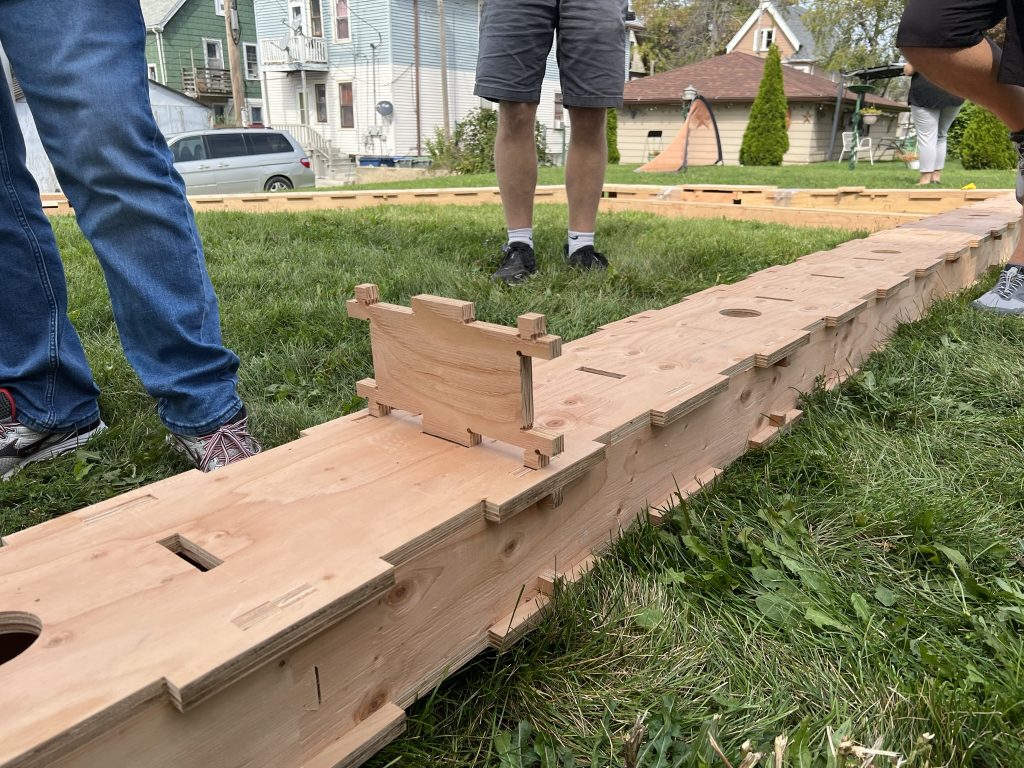
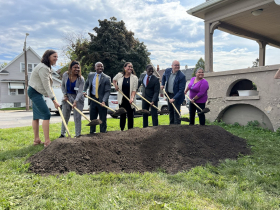
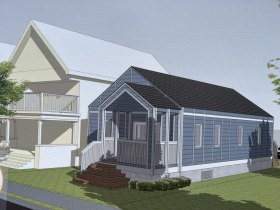
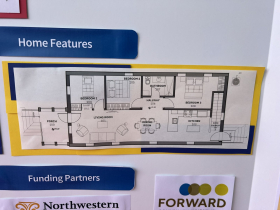
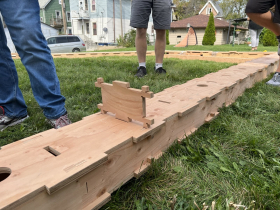
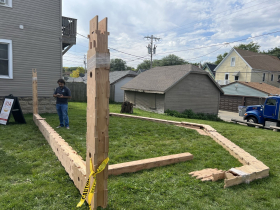
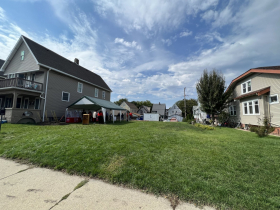



















It is encouraging to read this article and I am really looking forward to seeing the empty lot transformed into affordable new housing. Although the build cost for the test house is high, $200K, which is twice the forecast selling price, they say the construction costs will come down when the project scales up. Project managers have to be right on that or this isn’t real affordability but subsidized affordability. Love that much of the work, both in design and construction, is being done locally. Also love that people in areas of need are going to be that benefit. If they can build thousands of these homes to meet the needs of local neighborhoods it will be a great day for the city.
One small point I have is that the 35th street location seems to me to be in the Silver City neighborhood not the Burnham Park neighborhood as stated in the article. But I could be wrong and it really doesn’t matter.
It sounds like a system which would find mass-market interest far beyond the housing lower income families.